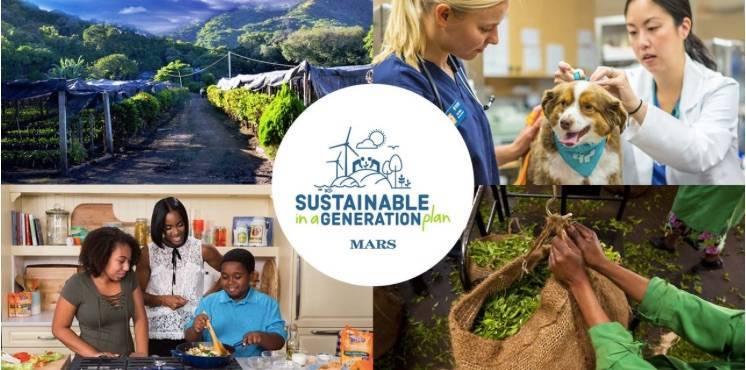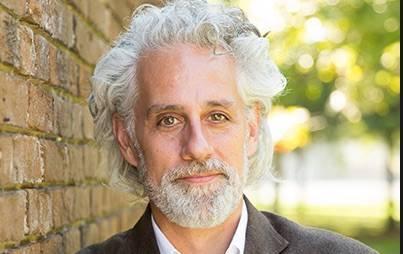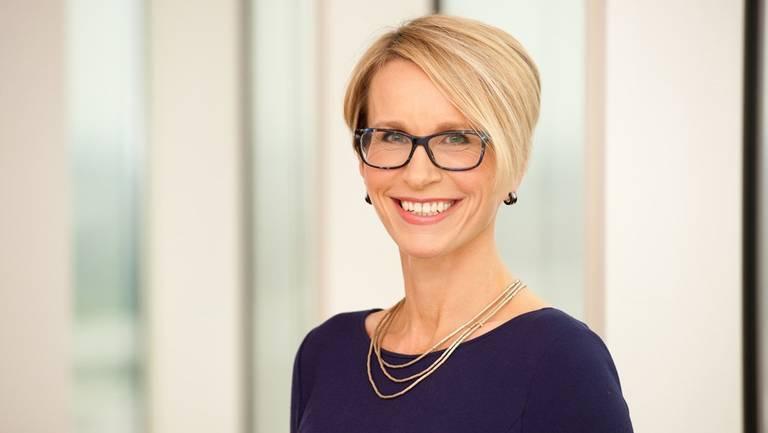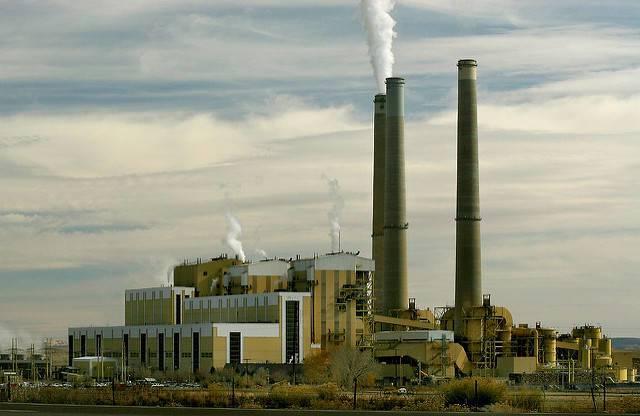$1.5 Million Grant for Innovative Ideas to Solve Income Inequality


With rising income inequality frequently cited as a major social issue in need of new solutions, calls for new thinking are emerging from every quarter.
The latest proposal for innovative solutions comes from The Alliance for the American Dream, an initiative of Schmidt Futures, which has granted $1.5 million to the University of Utah “to solicit and develop ideas for ensuring a vibrant middle class in America.”
The Alliance’s starting point is that “a healthier and larger middle class reduces income disparity and provides enhanced opportunity and economic mobility.”
Its initial challenge has a specific, concrete charge: the university will work with other individuals and groups throughout Utah “with the intent to increase net income for 10,000 of the state’s middle-class households by 10 percent by 2020” by using new technology and policy ideas.
“This project, which will bring together students, faculty, staff and the community, aligns perfectly with our role as the state’s flagship institution,” said President Ruth V. Watkins. “As a top-tier research university, we recognize and embrace our duty to make positive, real and lasting contributions to our state. We are excited to see what promising ideas come forward to improve our community and provide equitable access to opportunity and prosperity.”
Why the University of Utah? The school’s ability to involve a wide range of community and campus partners was noted as a specific strength during the selection process.
Also, Eric Schmidt, the founder of Schmidt Futures, lived in the state in the 1990s. Schmidt is now a technical advisor to Alphabet Inc., a member of its board of directors and its former executive chairman. (Alphabet Inc. is the parent company of Google.)
“We are happy to welcome the University of Utah as an inaugural partner in the Alliance for the American Dream,” Schmidt said. “Utah looks like quite different than when I lived here in the 1990s, and yet many of the features that made it a great place to do business then continue today — an energized and giving population, an innovation mindset and a willingness to pilot new policies and ideas.”
The school says it will launch a process in coming weeks to solicit ideas from throughout the state by late fall. Ten proposals will be selected; each will receive up to $10,000 to further develop the idea.
A broad-based local advisory board will select the three best technology and policy ideas from that group. Each of the three proposals will be eligible for an additional award of up to $30,000 to aid in refining the idea.
The university will work with the final three teams by providing access to facilities, and connections to resources and faculty. The school will then forward those proposals to the Alliance, which will provide up to $1 million in additional support to the best ideas that emerge from across the nation.
“The conversations the Alliance will engage in are timely and important as we look toward further diversifying our economy,” said Lt. Gov. Spencer J. Cox. “This initiative will help us develop critical infrastructure for continued economic growth in our state.”
Driving the New Climate Economy: How Companies and Communities Can Thrive in a Changing World


By Lisa Manley
There are clear signals that the climate has changed over the past century. Around the world, people are beginning to feel the effects, from increased average and extreme temperatures, to changes in rainfall patterns, to more severe and less predictable storms. At Mars, we source key agricultural materials from countries and communities that are vulnerable to the impacts of climate change. We believe it’s time to take a new approach to addressing this challenge, using our influence and reach to take action that proactively addresses the impacts of climate change within our supply chain and operations. Here are three things our business and others are doing to take action.
Setting Science-Based Targets
More than 97 percent of actively publishing climate scientists agree human activity is extremely likely to be causing the climate-warming trends over the last century. To avoid the worst consequences of climate change, science tells us we should limit global warming to less than the two degree Celsius threshold outlined in the Paris Agreement on climate change. As the saying goes, you can’t manage what you don’t measure. With that in mind, the first thing business should do is trust the science; then align measurable goals and actions around that science.
We looked to the best-available science to guide us in setting our climate goals at Mars. That science says we must reduce the total greenhouse gas (GHG) emissions across our value chain by 27 percent by 2025 and by 67 percent by 2050 (from 2015 levels). That means not only changing how we operate, but also working with partners and suppliers to transform entire value chains so that the ingredients we need to make our best-loved products, like M&Ms and Uncle Bens, are produced with lower environmental impacts. This isn’t an easy goal to meet. But we know it’s what’s necessary to unlock the systemic changes that are needed to benefit people and the planet.
Committing to Renewable Energy
The second thing business should do is look for the places where we can get the most immediate momentum and leverage that momentum for scale. At Mars, energy use is the major driver of our GHG emissions from direct operations. That’s why we’re big fans of renewable electricity with a goal to eliminate 100 percent of the GHG emissions from our direct operations by 2040. This goal covers the energy use from about 420 sites in more than 80 countries around the world.
We’re already using or purchasing renewable electricity to cover 100 percent of our operations in Belgium, Lithuania, the United Kingdom and the United States. And in 2018, we plan to add Austria, the Czech Republic, France, Mexico, Poland and Spain to this list. In addition to renewable electricity, renewable thermal energy is an important part of our energy use in our factories. For that reason, we helped launch the Renewable Thermal Collaborative – a coalition for organizations that are committed to scaling up renewable heating and cooling at their facilities and dramatically cutting carbon emissions.
Fostering Executive Engagement and Advocacy
The third imperative for business action is to ensure we are aligning what we say with what we do. We need more vocal business advocates for climate action. We are walking this talk through coalitions such as We Are Still In, a declaration made by 2,700 cross-sector leaders in the U.S. to commit to tackling climate change, ensuring a clean energy future and upholding the Paris Agreement. It also can happen through executive advocacy. For example, our Mars chairman, Stephen Badger, recently authored an op/ed piece in The Washington Post, which makes a strong call to action to global businesses on climate change.
We also need to extend our advocacy to include the seats of power and influence within government. That’s why we engage with groups like the Ceres BICEP (Business for Innovative Climate and Energy Policy) Network, to bring business leaders’ voices to Capitol Hill and local legislatures on climate action and clean energy.
For global businesses, it is our time to step up and lead on climate action. This is not just the “right thing to do,” but also makes good business sense; investing in sustainable practices today will help us become stronger, more resilient businesses in the future.
Lisa Manley is Senior Director, Sustainability Engagement & Partnerships, Mars, Inc.
Photo: Mars, Inc.
This article originally published on LinkedIn and distributed by 3BL Media.
Tech Upgrade Needed for UK Local Charities to Receive Corporate Donations


Small local charities are receiving lower donations from UK companies than large high-profile causes even though they concentrate on community needs and are hit more heavily by external factors such as cuts in government spending and charitable grants.
The disparity was highlighted by The Good Exchange, a non-profit body that links givers with beneficiaries, after a poll of 201 CSR managers in the first three months of 2018. The solution, however, may be in the office computer.
Three quarters of managers agreed the cuts made corporate and employee fund-raising more important to local charities but only 20 per cent of donations was contributed to them, compared with 42 per cent to national causes.
The National Council for Voluntary Organizations points out that 40 charities, or 0.2 per cent of the total, represent 18.4 per cent of all contributions, while 144,000, or 87 per cent, have an annual income below £500,000 ($708,000, €573,000).
Ed Gairdner, The Good Exchange chief operating officer, offered an explanation: “Smaller charities and charitable initiatives provide essential support within communities that are dealing with the impact of years of local government cuts.
“However, they are missing out on vital corporate funding as they simply cannot compete with the big national charities when it comes to generating awareness of their funding needs and having the time and skills to identify and build relationships with the decision-makers in business who decide which charities to give money to.”
The burden of the paperwork and administration involved is one obstacle, and many managers find it difficult to obtain detailed information about individual charities when choosing which ones to support.
The technology that does the job for managers could be the answer, suggested Gairdner.
He said: “Matching technology enables businesses and their fund-raising employees to work more effectively with the charitable industry to rapidly and proactively identify and provide funding to those in need, even if they do not know each other.
“We believe it has a vital role in levelling the playing field for the distribution of charitable funds locally, regionally and nationally, but with, importantly, less administrative effort.”
And this, he concluded, is “ultimately to the benefit of us all”.
Starbucks’ Problem is Our Problem


By Chris Jarvis
By now we’ve all seen the news. Two young men sitting and talking in a Starbucks in Philadelphia, waiting for a friend before ordering coffee. Haven’t you done the same? But in the upscale Center City neighborhood, apparently you can’t be black and not buy. While some of us happily abide by the basic courtesy of waiting for others before ordering, these guys had the cops called on them by the store’s barista. According to a Washington Post article; “Nowhere else in Philadelphia are African Americans more disproportionately stopped by police than in the Center City neighborhood”.
The response was immediate. Starbucks CEO Kevin Johnson issued a statement on Saturday apologizing for the incident. The apology was followed with an announcement that Starbucks will close 8,000 U.S locations on the afternoon of May 29 to provide implicit bias training to 175,000 employees aimed at “preventing discrimination in our stores.”
Will Implicit Bias Training Work? Probably not.
Implicit or unconscious bias “refers to the attitudes or stereotypes that affect our understanding, actions, and decisions in an unconscious manner. These biases, which encompass both favorable and unfavorable assessments, are activated involuntarily and without an individual’s awareness or intentional control.” Obviously, this immediate and unconscious tendency of human beings to automatically default to stereotypes can lead to situations epitomized in the Starbucks incident.
Implicit bias training has been around in one form or another since the 1960s. The goal of the training is to guide people to understand the concept of implicit bias and how it is expressed in society and our personal lives. Many training programs rely on an implicit bias test to demonstrate the universality of such biases. From there, instructors offer new mental models by which to see and understand the world with practical guidance on tools to employee to consciously address the unconscious reactions we become aware we may be making negative associations based on our bias.
What’s missing?
Unconscious or implicit bias training speaks to our conscious awareness and that means it has significant limitations. According to Jack Glaser, professor of public policy at the University of California, Berkeley, “The nature of implicit bias is such that you cannot subjectively experience when it’s influencing you.” In fact, Dr Mahzarin Banaji of Harvard, a researcher who developed the widely used Implicit Association Test (IAT) was “deeply embarrassed” upon seeing the test results as she discovered that she had a pro-White bias (she herself is a dark-skinned female). “I was humbled in a way that few experiences in my life have humbled me,” she reported to the Washington Post.
Despite who we are or where we are from we all struggle with our unconscious bias. This is due to the fact that our reactions to those who are dissimilar to us in racial categories or socio-economic standing occurs at a pre-conscious level of assessment in the medial Prefrontal Cortex (mPFC) of the brain.
We see, react, and then process at a conscious level – and this can make matters worse. Research indicates that we are prone to use our “higher brain functions”, our conscious level of awareness, to justify the prejudice we feel automatically.
Implicit Bias Training is Only Half of the Answer
Herein lies the problem. Implicit bias training does not meaningfully influence the part of the brain largely responsible for implicit bias and our instinctive reactions others who we do not consider to be our in-group, our mPFC. In the HBR article Why Diversity Programs Fail the authors Frank Dobbin and Alexandra Kalev conclude, “The positive effects of diversity training rarely last beyond a day or two, and a number of studies suggest that it can activate bias or spark a backlash.”
That’s not to say that we don’t need new information and mental models to interpret the world more accurately and understand the idea of implicit or unconscious bias. Education is a meaningful step in the right direction. However, understanding implicit bias as a concept is not enough to change pre-conscious reactions that determine how people treat others who are dissimilar. The real solution to implicit bias is to address the way our brains work at both conscious unconscious (or preconscious) levels.
Implicit Bias Requires Thought and Experience
Unraveling implicit bias requires literally creating new neural pathways in our brains. This process is known as neuroplasticity whereby the brain’s synaptic connections are constantly being removed or recreated. This is how we learn new behaviors and gain new skills. Here is a fascinating example: The Backwards Brain Bicycle
Experiences where we interact with others against whom we carry unconscious bias are well documented as the only reliable strategy to change attitudes and behaviors in a lasting way.
During World War II the Harvard sociologist, Samuel Stouffer found that “whites whose companies had been joined by black platoons showed dramatically lower racial animus and greater willingness to work alongside blacks than those whose companies remained segregated. Stouffer concluded that whites fighting alongside blacks came to see them as soldiers like themselves first and foremost.
The key, for Stouffer, was that whites and blacks had to be working toward a common goal as equals—hundreds of years of close contact during and after slavery hadn’t dampened bias.” Read more here: Why Diversity Programs Fail.
Core Element of the Process: Disorienting Dilemma
Why does this happen? Experiences with our ‘out-groups’ invite us to humanize the other. Typically this occurs when the situation involving our out-group does not fit our expectation and we experience a ‘disorienting dilemma’. This results in a condition known as cognitive dissonance. We question ourselves in light of the experience and the emotions of the moment and determine that we cannot resolve the dissonance without some change in our views of the world.
Disorienting dilemmas can be as difficult as they sound – even when they’re associated with positive experiences. It’s uncomfortable to discover that the world is not as we thought. This is also why disorienting dilemmas are so important. When we become accustomed to our assumptions – when we allow ourselves to believe that our point of view is the only view – we lose our ability to empathize with others. Consequently, diminished empathy leads humanity to unspeakably dangerous places. In extreme situations, this “failure to spontaneously consider the mind of another person, may be a psychological mechanism facilitating inhumane acts like torture.” (Read the research here)
How do we turn theory into practice? Transformative volunteering
The solution may be more apparent and accessible than meets the eye. Most large companies already have an effective method of addressing implicit bias via employee volunteering programs. Employee volunteering represents opportunities to create nonthreatening space in which to challenge preconceived notions about people and issues that may seem “different.” It enables contact between in-groups and out-groups. When volunteer opportunities are provided appropriately and with respect for the sensitive backgrounds and situations of participants, it becomes possible to eliminate the historically dangerous mindset of us versus them. In nonthreatening contact with out-groups, previously formed conclusions are challenged by interaction\ns, which soon line up with faces followed by names. This is empathy. And empathy is essential to survival.
Unfortunately, most volunteering is transactional. Transactional volunteering fails to trigger the growth of new synaptic pathways. Companies like Starbucks must adopt a Transformative Approach to volunteering. This model creates space for participants to reach beyond the immediate context and circumstances of themselves and their communities. Instead of simply exchanging time or resources for the reward of feeling like they made a difference, volunteers are guided to consider their potential to become increasingly pro-social human beings with a greater capacity for empathy.
The primary focus of transformative volunteering is the change that occurs in the volunteers themselves. Volunteering programs and activities are designed to invite all participants to “engage in critical reflection on their experiences, which in turn leads to a perspective transformation.” This transformation in an individual’s perspective is necessary to achieve change at the psychological, convictional, and behavioral level.
The Power and Responsibility of the Corporation
Currently, Starbucks has an employee volunteer program with some forward-thinking features such as the ability to invite friends and customers to participate in employee-led events. In order to increase the value of these events and create space for transformation, Starbucks has to offer training specific to organizing and leading events that invite participants to discover their implicit bias – and so can every other company. Companies, for better or worse, are in positions of overwhelming power. If millions of people who work for companies around the world experience transformation through volunteering, we can inoculate the population against objectifying our fellow human beings. And we can avoid shameful encounters like the one witnessed at Starbucks.
How can your company design, manage and measure a transformative approach to employee volunteering? Give us a call – we’ll tell you how to do it and then we’ll offer to help make it happen.
How can you help?
The RW Institute is currently embarking upon the research and development of a new model for Corporate Citizenship that will provide the experiential piece of the equation necessary to successfully address implicit bias in the workplace. If your company is interested in learning how you can participate in this project, please contact [email protected] for more information.
Additional Resources:
- VIDEO: Procter and Gamble; The Talk
- NPR PODCAST: The Culture Inside
- Scientific research has shown that even well meaning people operate with implicit bias – stereotypes and attitudes we are not fully aware of that nonetheless shape our behavior towards people of color. What does it take to change these deeply embedded concepts? Can it even be done?
- HBR ARTICLE: Why Diversity Programs Fail
- HBR ARTICLE: Diversity Doesn’t Stick Without Inclusion
- TOPIC: Implicit Bias Explained
- ONLINE TOOL: Implicit Bias Test
Photo: Realized Worth
Originally published at Realized Worth and distributed by 3BL Media.
Eco-design, Energy Efficiency, CSR Practices, and Good Governance Reported at Bloomberg


Bloomberg's new London HQ
Efficiency and environmental measures have cut carbon dioxide emissions by 834,209 tons in nine years reports Bloomberg, the Manhattan-based financial, software, data and media company.
As a result, operating costs have been reduced by an impressive $103m (£74m, €84m).
The emissions statistics are among the ethical achievements listed in Bloomberg’s 2017 impact report.
Another environmental bouquet is awarded for the company’s new European headquarters in London. The center received the highest design-stage rating of any large office development in the world from the UK Building Research Establishment assessment method for sustainable constructions.
At the same time five new Bloomberg offices were certified by the US Leadership in Energy and Environmental Design (LEED) system, the world’s most widely used rating body for green buildings.
The company’s customers are also showing increases in sustainability and CSR practices. Bloomberg reports that 14,935 used its environmental, social and governance data last year, 22 per cent more than in 2016.
More success is recorded for the company’s gender gap efforts. Membership of its gender equality index, which supports its work with companies in observing how they are moving women up the promotion ladder, has doubled in a year to 104. These members range over ten sectors in 24 countries and regions.
Still on the gender theme, the Bloomberg News section of the group, under its “Women’s Voices” project, increased its number of female experts and officials in stories and broadcasts. The company says the program continues to expand.
Bloomberg is equally proud of its record on pensions. During the past year the company became the first US-based corporate retirement plan sponsor to build the UN’s six Principles for Responsible Investment into its investing practices.
Employees have flown the company flag, too. In 2017 more than 12,000 of them in 92 of the world’s cities gave more than 145,000 hours’ service helping the disadvantaged, strengthening communities, protecting the environment and volunteering for various social duties.
Curtis Ravenel, the group’s head of sustainable business and finance, said: “At Bloomberg we have been a long believer that sustainable business is good business, and our impact report continues to emphasize how we are proving the business case for sustainability.
“More disclosure on how companies will be affected by climate change will help investors make more informed decisions.”
Ravenel goes on to highlight Bloomberg’s contribution to the international Task Force on Climate-Related Financial Disclosures, which develops financial risk transparency to inform company stakeholders.
The task force was formed by the Financial Stability Board, which itself was created by the G20 nations to monitor the global financial system and make recommendations. The board is chaired by Mark Carney, governor of the Bank of England. Bloomberg has integrated the task force’s principles into its impact report.
Photo: Bloomberg
To Go Circular, First Go Vertical


By Alan Barton
Early last year, the waste management world was abuzz with news of furniture manufacturing giant Ikea’s minority stake in the Dutch plastics recycling company, Morssinkhof Rymoplast Group.
Part of the $1 billion Ikea earmarked for sourcing sustainable materials, this was a step toward achieving the company’s goal of making its plastic products from 100 percent recycled or recyclable materials by 2020.
It was also part of the company’s program to vertically integrate its supply chain, which includes the purchase of forests in Eastern Europe and a wind farm in Poland to exercise greater control over the supply chain.
The chemical industry is also integrating recycled materials into their value chains. In 2017, Imerys, a leading global supplier of mineral additives, announced the acquisition of Regain Polymers, building on their platform of supplying additives to the plastics industry and improving the sustainability profile of their Performance Additives business unit.
And Michelin, one of the world’s largest tire manufacturers, joined the vertical integration game with its acquisition of Lehigh Technologies.
Where the rubber meets the road
Lehigh Technologies is a specialty chemicals company that produces highly engineered, versatile raw materials called micronized rubber powder (MRP) from waste tires. By acquiring a company with an innovative method for recycling tire materials, Michelin is reducing its use of natural resources – in line with its “4R strategy” of Reduce, Reuse, Recycle and Renew.
MRP replaces oil- and rubber-based feedstocks in a wide range of industrial and consumer applications, including high-performance tires, Michelin’s core market.
Vertical integration helps companies close the loop on their products by giving them greater control over the product lifecycle – from beginning to end.
The vertical integration of supply chains is not new, but sustainability provides a new motivation for this approach.
Building demand
In the U.S. alone, more than 300 million tires are disposed of annually – globally, it’s about 1 billion tires. Michelin is not only securing its supply chain and driving costs lower but also addressing the issue of sustainably managing the end of life for millions of tires.
Beyond offering manufacturers a secure supply chain, vertical integration both manages end-of-life waste and provides raw materials to secure demand for recycled materials.
One of the biggest challenges for the recycling industry, especially for plastics, is building demand for recycled materials.
Vertical integration provides companies with a guaranteed customer and in turn ensures stable revenue, allowing them to expand operations and recycle even more waste.
In fact, with the added investment from Michelin, Lehigh has expanded its circular economy solutions for waste tires globally and is in the process of building a plant in Navarre, Spain, as part of a joint venture with Hera Holdings.
New momentum
There is growing regulatory (and hence economic) momentum for companies to manage the full life cycle of their products.
The European Union recently introduced its Circular Economy Stakeholder Platform, an ambitious strategy that seeks to close the loop on manufacturing and reduce waste. Unveiled earlier this year, China’s National Sword campaign also bans the import of certain waste products.
As we work toward developing a circular economy that will help us better manage our waste, companies should look to vertical integration, which not only reduces costs and streamlines operations but also ensures a more sustainable product life cycle.
Alan Barton is CEO, Lehigh Technologies, Michelin
This article originally appeared on the U.S. Chamber of Commerce Foundation blog and was distributed by UPS with permission on 3BL Media.
This Ag Commodities Giant has Rolled Out a New Sustainable Supply Chain Technology


More companies are feeling the pressure to ensure their supply chains are minimizing their environmental and social impacts. To that end, Olam International recently announced what it calls AtSource – a traceable sourcing solution the company says will offer insights into the journey raw materials take from farms to consumers’ shopping carts. Based in Singapore and operating in 66 nations, Olam is among the globe’s largest supplier of cocoa, coffee, rice and cotton.
TriplePundit had a few questions about this supply chain initiative. Answering them are Simon Brayn Smith, Vice President, Cocoa, with Olam, and the company’s Head of Corporate Responsibility and Sustainability, Dr. Christopher Stewart (whose answers are noted by his initials).
What were the developments that led to the adoption of AtSource?
The development of AtSource stems from our purpose to “Re-imagine Global Agriculture.” As a company, Olam has been focused on many initiatives to drive sustainable practices across our own operations and our third-party sourcing. These include for example, the Olam Livelihood Charter, which today embraces just under 363,000 smallholders across Africa, Asia and South America, while across our supply chains, we have been rolling out our supplier code.
However, until the development of AtSource, we haven’t been able to give our customers a clear and holistic view of a single product’s journey from the farm right through all the stages, such as various logistics and processing, until we deliver that product to the customers’ doors (as in food manufacturers, not consumers.) This has required a huge amount of work to put the structures in place internally to capture all of this information, which relate to over 80 key performance indicators across 12 sustainability topics.
What is some of the feedback you're receiving from customers?
We’re receiving positive feedback from those customers is that we’ve met with so far to introduce them to AtSource.
As sustainability and responsible sourcing become increasingly important issues for consumers, the whole food supply chain needs to become more visible, so companies can reconnect their customers with where their food comes from. Our customers’ appetite for real-time data and transparency has therefore never been stronger, and AtSource helps satisfy this demand by providing the ability to track the social and environmental footprint of their product to the source of supply.
How are you supporting suppliers? As companies strive to make their supply chain more responsible, there are more costs involved; and many of these suppliers and producers run on thin margins. So how is Olam supporting this to ensure it works?
This is a huge and costly task for Olam given our vision of all our physically sourced products being “AtSource ready” by 2025. It’s true that many companies within the supply chain are investing heavily in sustainability initiatives - and this is why we think AtSource can be particularly beneficial because with the data and insights it provides, it means our customers can make their investments based on more knowledge, which is therefore both more efficient and effective.
How can this create a "net positive impact?"
(CS) Many companies are making demanding commitments within a framework of “do less harm.” But this is not scaled to the challenge, because if we all continue to “do less harm” on a bigger and bigger scale, ultimately, we will continue to do harm. Instead, what we need to do is have a net-positive impact, which means putting back more into farming systems than we take out. In concrete terms, this means drawing down more carbon dioxide than we release, building back organic matter into the soil, restoring and regenerating natural ecosystems within farming landscapes, raising water tables, and regulating the flow of water - not just minimizing the abstraction of water.
On the social side, it means that we need to address not just the symptoms of farmer poverty in developing nations, but also understand the root cause of poverty in that community. Getting to the root of the problem and then working on reducing and halting the negative impacts is at the heart of this net-positive model.
As you may have already seen, in April we announced our new Living Landscapes policy, with its overarching vision of having a net-positive impact. Its aims apply across products, and cover Olam’s plantations and farms, as well as its extensive third-party sourcing network of more than 4 million small and large-scale farmers. The Policy represents a step-change in ambition for Olam: to re-imagine agriculture by putting back more into food and farming systems than is taken out.
How does all of this align with the United Nations’ Sustainable Development Goals (SDGs)?
(CS) Our global corporate responsibility and sustainability framework integrates our new purpose, to “Re-imagine Global Agriculture” with ten new material areas and the SDGs on which these material areas will have an impact.
The intended outcomes of our purpose-prosperous farmers and farming systems, thriving communities and re-generation of the living world are the criteria for having a net-positive impact. To achieve this, we need to drive positive transformation at scale, where there’s shared learning, benefits and responsibility, and involves the participation of local communities and stakeholders.
Aligned with SDG 2: Zero Hunger, for example, Olam is improving economic opportunities for farmers with its joint initiative Better Rice Initiative Asia (BRIA), which aims to develop rice production and consumption through a value chain system. This has achieved income increases for producers of between 10 and 25 percent. The initiative is transformative because it targets the whole rice system at scale, across a number of countries, addressing all the different elements of farm production, from management and water use, to health and safety and labour rights.
Another example is how we’re addressing the global challenge of water security, aligned with SDG 6, is on our coffee plantation in Tanzania. We’re looking at water management not just on our plantations, but at a landscape scale. As well as promoting better irrigation on our farm, we’ve set up a water management board for the Upper Ruvuma river, to tackle the challenges needed to ensure water security for the 300,000 people who live in the surrounding river basin.
Image credit: Olam International
Wells Fargo Demonstrates Sustainability as Risk Management


Wells Fargo's CEO is mindful that he's still in clean-up mode. Timothy J. Sloan took the CEO role in October of 2016, weeks after the company made international headlines for playing fast and loose with customers' privacy and finances. Three and a half million accounts were opened fraudulently, thanks to an overly-aggressive culture of sales and untenable "cross-selling" targets. It's going to be a while before the banking giant fully recovers its reputation as a small town bank.
That's why Sloan, the company's former COO and CFO, beat the drum of rebuilding customer trust when he took the stage at last week's CECP CEO Investor Forum in San Francisco. Sloan was frank about the steps he and the board are taking to reset the corporate culture to focus on customer needs. And those changes start at the top: with the board of directors. The board has six new members since 2016—over 1/3 of the total membership has been refreshed—and new board members bring new attention to the matters that matter now for Wells Fargo: risk management, human capital management, consumers and corporate social responsibility, alongside technology, regulation, finance and accounting. The board has enhanced risk oversight, governance and human resources, with refreshed leadership in these subcommittees. The bank is betting that better governance, slowly but surely, is one key to shoring up operations. The company also formed a stakeholder advisory council in December of 2017, which includes seven external members representing consumer rights, fair lending, environmental, human and civil rights. “It’s amazing what you find out when you ask and listen,” Sloan said. Integration of human resources, employee engagement, risk management—under the corporate sustainability umbrella or not—will be key to a financially healthy future for the company.
When asked by BlackRock about employee engagement and talent retention, Sloan turned to the data: "The best measure of engagement is the number of applications and retention rates. With surveys, employees might tell you what you want to hear, but people don’t lie with their feet." New efforts to support employees seem to be working—team member turnover is down to lowest level since 2013.
Sloan was also quick to highlight the firm's investment in equity projects:
- 15.8K low income homeowners “created’ through $372 million in down payment assistance from wells fargo LIFT programs since 2012
- 15% of controllable spending with diverse suppliers by 2020 (at 11% right now)
- $73B provided in new purchase loans to minority households
- $28.9B in new purchase loans to low-moderate income households.
And the big announcement of the day: By 2030 Wells Fargo will provide $200B in financing to sustainable business, with more than 50 percent focused on clean technology and renewable energy transactions that support to low carbon economy. While this announcement didn't overtake the same-day news break that Wells Fargo would be subject to a $1 billion fine, it did show the world that Wells Fargo is committed to charting a new path forward, without forgetting the sins of the past.
Gender Pay Gap Closes Up for CEOs


Pictured: Emma Walmsley, CEO, GSK
A new, comprehensive study finds that female and male chief executives of public companies are paid about the same. “No “significant difference” exists, concluded the authors of “Revisiting the Gender Gap in CEO Compensation.” The in-depth report looked at compensation for corporate leaders at 2,282 companies from 1996 to 2014 to arrive at this unexpected finding.
The report’s researchers suggest that the CEO gender pay gap may have closed up because chief executives of public companies are now prominent figures. “We think it is a visibility issue,” co-author Vishal K. Gupta told the NY Times. “It [the role] is highly visible to all the stakeholders.” As CEOs increasingly serve as “the face” of a company, the investment in the position becomes significant, whether the chief executive is male or female.
The finding does not examine why there are so few female CEOs: 32 among Fortune 500 companies, or 6.4 percent of the list, as of mid-2017. This number compares to a workforce of business professionals that is made up of a majority of women. Ironically, the relatively low number was hailed as record-breaking by Fortune: “the 2017 ranking includes more female chiefs than any previous list since the first Fortune 500 ran in 1955.” It was also noted that the previous year’s total of female CEOs was 21, so that 32-count benchmark represented an increase of more than 50 percent over 2016.
The new study also does not examine why women earned 82 percent compared to men’s earnings last year, according to a Pew Research Center report, “The Narrowing, but Persistent, Gender Gap in Pay.”
The CEO compensation picture is not as rosy in the nonprofit sector. A recent study of organizations finds that there are more female chief executives than male, but women are paid up to 21 percent less in nonprofits with budgets larger than $50 million, according to GuideStar’s “2017 Nonprofit Compensation Report.”
Photo: GSK
HSBC the Latest Bank to Announce End to Fossil Fuel Investments


According to several recent news reports, global banking giant HSBC has announced it would no longer fund fossil fuel projects, including Arctic drilling, tar sands development, the construction of new coal plants, and hydroelectric projects that are not consistent with guidelines set by the World Commission on Dams.
“Our updated energy policy reflects HSBC’s ambition to help our customers make the transition to a low-carbon economy in a responsible and sustainable way,” said Daniel Klier, Group Head of Strategy and Global Head of Sustainable Finance, HSBC in a public statement. “We recognize the need to reduce emissions rapidly to achieve the target set in the 2015 Paris Agreement to limit global temperatures rises to well below 2°C and our responsibility to support the communities in which we operate.”
One organization applauding HSBC’s move is Genus Capital Management, a British Columbia-based investment firm that includes environmental organizations, foundations and indigenous communities as clients.
“It looks as though HSBC wants to be a leader rather than a laggard in the global transition to a low carbon economy,” said Mike Thiessen, Genus' manager of sustainable research, during an email exchange with TriplePundit.
But despite the public stances on fossil fuels taken by financial titans such as ING, BNP Paribas and BlackRock Investments, many financial institutions are still resisting the growing calls to extract themselves from carbon-intensive investments.
According to Genus, such moves – or the lack thereof - indicate that those banks are not considering the significant risks of stranded assets, as in coal or oil deposits left in the ground out of necessity or decreased demand. Banks are also exposing themselves to more risk, due to the increased pace of regulation from governments that see the need to take on climate change.
In addition, from the point of view of Genus and activist investors, litigation seeking compensation for infrastructure costs linked to dealing with climate change filed by several North American cities against fossil fuel companies should be another sign that banks need to rethink their lending practices. Finally, changing cultural shifts, along with shifting client desires that the investment community has been witnessing, show that the handwriting is on the wall.
“Many of our clients are moving their accounts to financial institutions that have divested, because they don't want to be contributing to the acceleration of climate change,” explained Thiessen. “Resistance to divestment likely indicates that a bank doesn't stand to benefit as much from the low carbon economic transition.”
The question then arises: so, what can individual investors do, if anything?
“It's really not that difficult to align your portfolio with your values,” replied Thiessen. “If you invest in an oil company, you are funding that oil company. The divestment movement will make it more difficult for oil companies to get funding and, therefore, harder to start new carbon-intensive projects.”
And there’s a flip side, noted Genus. By investing in companies that make a positive impact on the world, you are funding them, and making it easier for them to raise capital and expand their businesses. After all, more individuals are aligning their food purchases, transportation, and clothing with their values — why not their investments?
“Like other movements, if enough people do it, it will make a difference. Investing in any industry that is harmful to the environment or people will have additional financial risks and our research shows divesting does not hurt your returns in the long run,”Thiessen said as the company wrapped up its email exchange with 3p.
HSBC apparently got the memo. The bank first announced it would “restrict its support” for coal-fired power plants in 2011. Now it has halted the finance of them altogether – with the exception of projects in Bangladesh, Vietnam and Indonesia. The exception, HSBC explained, is necessary “in order to appropriately balance local humanitarian needs with the need to transition to a low-carbon economy.”
Image credit: Arby Reed/Flickr